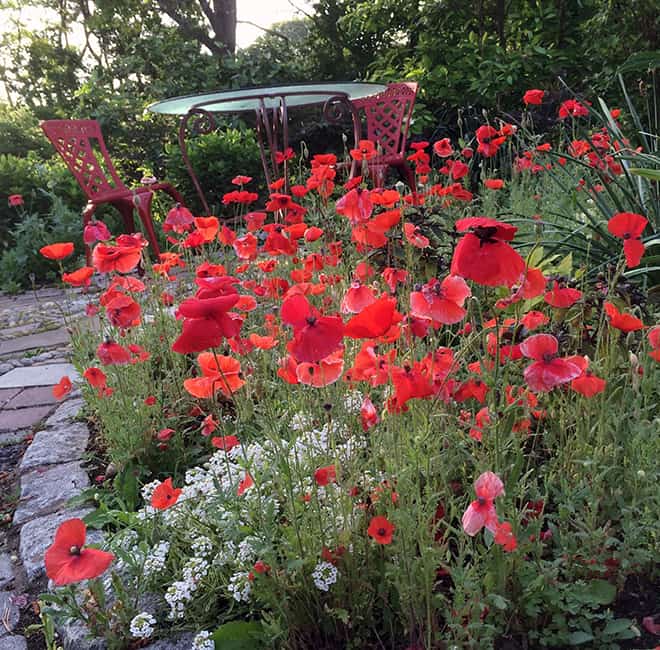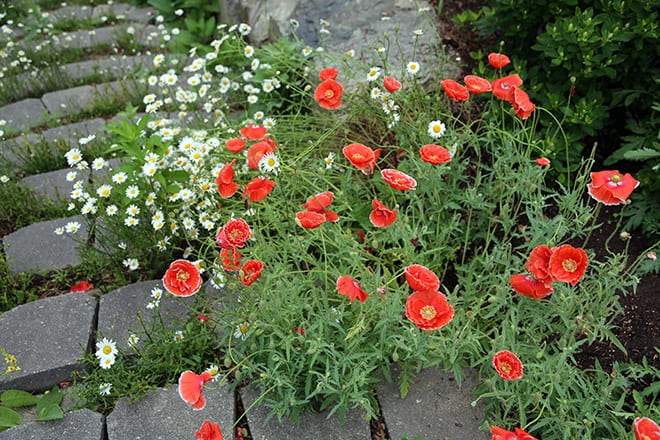Name: Papaver rhoeas aka corn poppy, Flanders poppy or common poppy.
Type of Plant: This is an annual poppy. The seeds germinate in the spring, the plant grows and flowers in early summer, and then it sets seed and is gone by mid-summer.
Why I love this plant: Why do I love a plant that isn’t perennial and doesn’t flower all summer? Because they are cheerful, bright flowers that makes everyone who looks at them happy. Even those who associate these poppies with the fields where war raged in WWI and WWII can’t help but be uplifted by these red flowers.
Although this is an agricultural weed in Europe, it’s a valued wildflower here because it offers early pollen for bees and other pollinators. I also love this plant because it self-seeds and returns spring after spring without my help. And it’s especially prized for mid-June color before other annuals are fully up and running.
A Word to the Wise: If you want these poppies to self-seed for you, be sure not to mulch where they grow. You can clear out the plants once they start to fade, but pick the seedpods and either scatter them immediately on the ground or let them dry in an envelope indoors for scattering later in the fall. Don’t cover the seeds with soil or mulch – they need to be in sunlight on the surface in order to germinate.
Water the areas where they grow in the early spring if it doesn’t rain once a week. Do not water more frequently; a good soaking every five to seven days is sufficient.
I say that these are for gardeners, not home-landscapers, because they do require some attention. You have to be willing to weed where they are germinating and learn to tell the difference between the poppy seedlings and the weeds. You have to be willing to scatter the seeds as they ripen and let them cover the surface of the soil. You have to be able to pull out the dead and browning plants in July so that they don’t detract from the other things growing in your garden. It is worth all of this and more.

Every year the corn poppies come up in this garden. I leave them until the second week in July. Once they are finished flowering and the seeds are on their way to being mature, I clip the seed pods off and pull the dying plants. In this area I’ll also plant annuals in and among the poppy seedlings in the spring. These poppies play well with others and don’t shade new annuals that are planted in and among their stalks.

If you want to have flowers growing in the area where corn poppies bloom in late June, plant the small annuals in and among the poppy stems in late May or whenever you normally plant young annuals. Once the poppies are finished, pull their stalks out so that they don’t detract from the look or growth of the annuals.

Some of my poppies are orange, some red, and others have a thin white edging on their petals. I love them all.

Will these grow in zone 9 (Bakersfield, Ca). Our temperatures start to rise early. It is April 23 and we have already seen temperatures in the mid 80’s but they didn’t stay. Would love to plant these.
You would plant these in February. Know that they do not flower all summer – only for about three weeks.